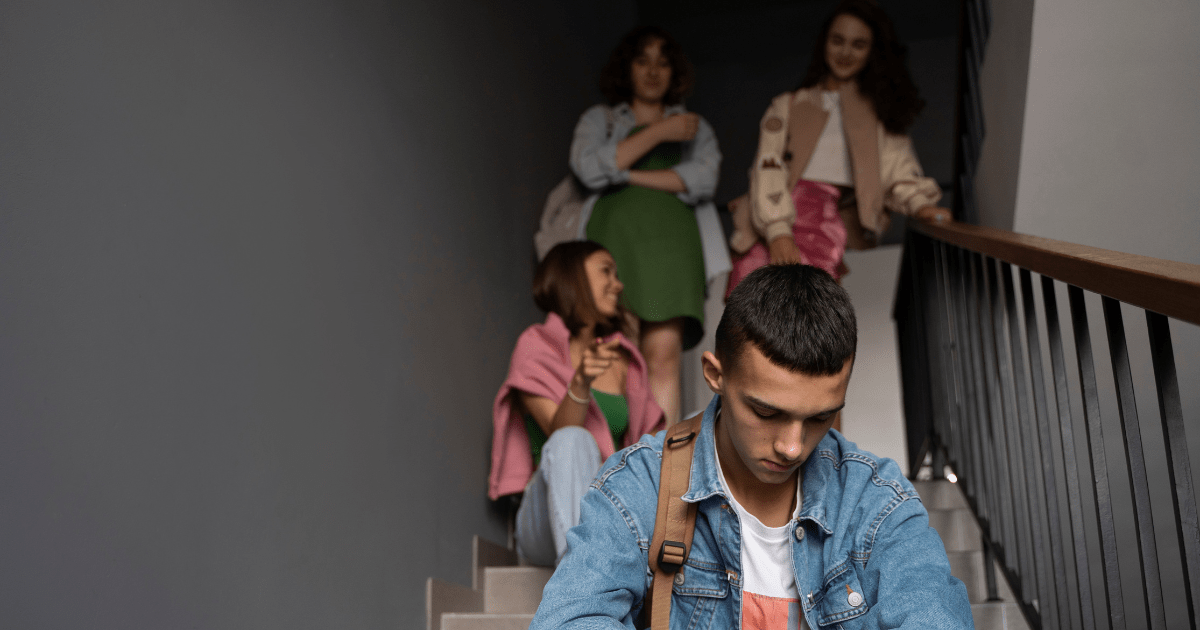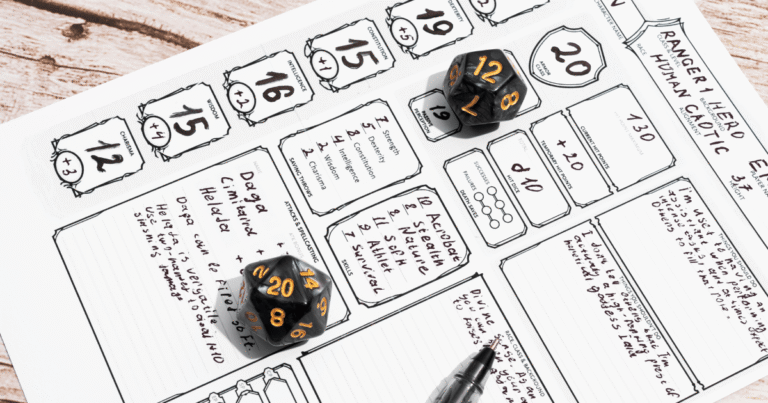Teenage Social Anxiety: A Complete Guide for Parents and Teens
Meta Title: Teenage Social Anxiety: Signs, Causes & How to Help Your Teen Meta Description: Complete guide to teenage social anxiety. Learn to recognize signs, understand causes, and discover effective strategies to help your teen overcome social fears.
When Social Fear Takes Over the Teenage Years
The teenage years bring natural awkwardness, self-consciousness, and social uncertainty. But for some teens, what begins as typical adolescent concerns evolves into something far more challenging: social anxiety disorder that can derail their educational progress, friendships, and overall development during these crucial formative years.
As a parent, watching your once-confident child suddenly refuse to attend social events, struggle to speak up in class, or withdraw from friendships can be heartbreaking and confusing. Understanding the difference between normal teenage social discomfort and clinical social anxiety is essential for providing appropriate support and intervention.
Social anxiety in teenagers is more than extreme shyness or temporary nervousness. It represents a persistent, intense fear of social situations that significantly impacts their daily functioning and quality of life. Left untreated, teenage social anxiety can affect academic performance, limit social development, and create patterns of avoidance that persist into adulthood.
The encouraging news is that teenage social anxiety is highly treatable, and early intervention can dramatically improve outcomes. With proper understanding, support, and professional help when needed, teens can learn to manage their social anxiety and develop the confidence needed for healthy social relationships and future success.
Distinguishing Normal Teenage Anxiety from Social Anxiety Disorder
Understanding when typical teenage social discomfort crosses the line into clinical social anxiety disorder is crucial for parents and teens alike. This distinction determines whether supportive encouragement is sufficient or whether professional intervention is necessary.
Normal Teenage Social Anxiety
Typical adolescent social anxiety involves manageable nervousness that doesn’t significantly interfere with daily functioning. A teen might feel butterflies before giving a presentation but still manages to complete it. They may feel awkward at parties initially but gradually relax as the evening progresses.
Normal teenage social concerns are situation-specific and temporary. A teen might worry about looking foolish during a particular interaction but doesn’t spend days or weeks obsessing about it afterward. The anxiety doesn’t prevent them from attending school, maintaining friendships, or participating in necessary activities.
Physical symptoms of normal teenage social anxiety are mild and brief. Some blushing, slight nervousness, or temporary stomach upset before important social events is common and expected. These symptoms don’t escalate to panic levels or persist for extended periods.
Recovery happens naturally with normal teenage anxiety. Once a feared social situation is over, the anxiety dissipates relatively quickly, and teens don’t typically avoid similar situations in the future based on one uncomfortable experience.
Social Anxiety Disorder in Teenagers
Social anxiety disorder involves intense, paralyzing fear that significantly impairs a teen’s ability to function in social situations. The anxiety feels overwhelming and uncontrollable, often accompanied by catastrophic thoughts about humiliation, rejection, or social failure.
The physical symptoms are severe and can include racing heart, profuse sweating, trembling, nausea, dizziness, and difficulty breathing. These symptoms can be so intense that teens worry they’re having a medical emergency or losing control completely.
Social anxiety disorder creates persistent avoidance patterns that interfere with important life activities. Teens may skip school to avoid presentations, refuse to attend social events, eat lunch alone to avoid cafeteria interactions, or avoid asking for help when needed.
The impact extends beyond individual situations to affect overall quality of life. Academic performance may suffer due to inability to participate in class discussions or group projects. Friendships become difficult to maintain when social anxiety prevents normal teenage social activities.
Anticipatory anxiety is a hallmark of social anxiety disorder, with teens experiencing intense worry for days or weeks before social events. They may also engage in extensive post-event analysis, replaying social interactions and focusing on perceived mistakes or embarrassing moments.
Recognizing the Warning Signs: A Comprehensive Assessment
Social anxiety in teenagers can manifest in subtle ways that are easily misinterpreted as typical adolescent behavior, moodiness, or academic struggles. Parents and educators need to look for patterns of behavior rather than isolated incidents.
Academic and School-Related Signs
School avoidance represents one of the most significant warning signs, particularly when teens develop mysterious illnesses on days with presentations, group projects, or social activities. They may attend school but skip specific classes that require social interaction or public speaking.
Academic performance may decline not due to lack of ability but because of anxiety about participating in class. Teens with social anxiety often understand the material but cannot demonstrate their knowledge due to fear of speaking up, asking questions, or participating in group work.
Teacher reports may indicate that a previously participatory student has become withdrawn, never raises their hand, or seems anxious when called upon. Some teens may complete excellent written work but struggle with any verbal presentations or group collaborations.
Social and Interpersonal Warning Signs
Friendship patterns often change dramatically when social anxiety develops. Previously social teens may suddenly prefer staying home, decline invitations to parties or social gatherings, or make excuses to avoid group activities they once enjoyed.
Changes in communication patterns provide important clues. Teens with social anxiety may become extremely reluctant to make phone calls, preferring text communication exclusively. They might struggle with face-to-face conversations, avoid eye contact, or speak so quietly that others have difficulty hearing them.
Social media usage patterns can also shift, with some teens withdrawing from online social interaction while others may use social media as a substitute for in-person socialization, feeling safer behind a screen than in face-to-face interactions.
Physical and Emotional Indicators
Frequent physical complaints, particularly stomach aches, headaches, or feeling sick before social events or school days, may indicate social anxiety rather than genuine illness. These psychosomatic symptoms are real and distressing but stem from anxiety rather than physical illness.
Emotional signs include increased irritability, mood swings, or emotional outbursts that seem disproportionate to the triggering event. Teens may become extremely self-critical, focusing intensely on perceived social mistakes or expressing fears about what others think of them.
Sleep disturbances often accompany teenage social anxiety, with teens experiencing difficulty falling asleep due to worry about upcoming social situations or staying awake replaying social interactions from the day.
Changes in eating patterns may occur, with some teens losing appetite due to anxiety-related stomach upset while others may eat more as a coping mechanism for social stress.
Understanding the Teenage Brain and Social Anxiety Development
The adolescent brain undergoes dramatic changes that create unique vulnerabilities to social anxiety development. Understanding these neurological factors helps explain why social anxiety often emerges during the teenage years and why it can feel so overwhelming for teens.
Neurological Development Factors
The teenage brain’s emotional center, the amygdala, reaches full development earlier than the prefrontal cortex, which controls rational thinking and emotional regulation. This developmental timeline means teens experience intense emotions, including social fears, without having fully developed the brain systems needed to manage those emotions effectively.
Hormonal changes during puberty affect neurotransmitter systems involved in mood and anxiety regulation. Fluctuations in hormones like estrogen, testosterone, and cortisol can increase vulnerability to anxiety disorders and make emotional regulation more challenging.
The teenage brain shows heightened sensitivity to social rewards and punishments, making peer approval and social acceptance feel critically important. This neurological reality explains why social rejection or embarrassment can feel catastrophic to teenagers in ways that adults might find difficult to understand.
Social and Environmental Triggers
The transition to middle school or high school creates new social pressures and expectations that can trigger social anxiety in previously comfortable children. Larger schools, changing peer groups, and increased academic and social expectations can overwhelm teens who were managing well in elementary school settings.
Bullying experiences, whether direct or witnessed, can trigger the development of social anxiety. Even single incidents of public humiliation or social rejection can create lasting fears about similar future experiences.
Social media adds a new dimension to teenage social anxiety, creating constant opportunities for social comparison and fear of judgment. The pressure to present a perfect online image while dealing with normal teenage insecurities can intensify social anxiety symptoms.
Family dynamics and modeling also play a role, with teens whose parents struggle with social anxiety being at higher risk for developing similar difficulties. High-pressure family environments or those with limited social interaction may inadvertently contribute to social anxiety development.
The Impact of Untreated Teenage Social Anxiety
Understanding the potential long-term consequences of untreated social anxiety helps parents and teens recognize the importance of seeking appropriate help and support.
Academic and Educational Consequences
Social anxiety can significantly impact academic achievement, not because teens lack intelligence or ability, but because their anxiety prevents them from demonstrating their knowledge and skills. Class participation grades suffer when teens cannot bring themselves to speak up or ask questions.
Group projects become sources of intense stress, with some teens either avoiding them entirely or taking on excessive responsibility to control the outcome and minimize social interaction with group members.
Educational opportunities may be missed when social anxiety prevents teens from joining clubs, participating in extracurricular activities, or pursuing leadership roles that could enhance their college applications and personal development.
The transition to college becomes more challenging when teens haven’t developed the social skills and confidence needed for dorm life, making new friends, or participating in campus activities.
Social and Relationship Development
Normal teenage social development involves learning to navigate complex peer relationships, develop intimate friendships, and eventually romantic relationships. Social anxiety can derail this natural progression, leaving teens socially isolated during crucial developmental years.
Friendship skills that are typically developed during adolescence may remain underdeveloped, making it more difficult to form and maintain relationships in adulthood. Teens may become overly dependent on family members or a single close friend, limiting their social growth.
Dating and romantic relationship development can be severely impacted, with social anxiety preventing teens from developing the confidence and skills needed for healthy romantic connections.
Long-Term Mental Health Implications
Untreated teenage social anxiety often persists into adulthood, potentially becoming more entrenched and difficult to treat over time. The avoidance patterns that develop during adolescence can become ingrained habits that limit adult opportunities and relationships.
Social anxiety frequently co-occurs with other mental health conditions, including depression, generalized anxiety disorder, and substance abuse. Early intervention can prevent the development of these additional complications.
Self-esteem and identity formation, crucial tasks of adolescence, can be severely impacted by social anxiety. Teens may develop negative self-concepts based on their social difficulties rather than their actual abilities and potential.
Effective Strategies for Parents: Supporting Your Anxious Teen
Parents play a crucial role in helping teens overcome social anxiety, but knowing how to provide effective support without inadvertently reinforcing avoidance behaviors requires understanding and skill.
Creating a Supportive Home Environment
Validation represents the first and most important step in supporting an anxious teen. Acknowledge that their fears feel real and overwhelming without dismissing or minimizing their experience. Phrases like “That sounds really scary” or “I can see why that would be stressful” demonstrate understanding and support.
Avoid well-meaning but unhelpful responses that can make teens feel more isolated or misunderstood. Statements like “just be more confident,” “everyone feels nervous sometimes,” or “you’re overreacting” invalidate their experience and can damage trust in the parent-child relationship.
Create opportunities for low-pressure social interaction at home by encouraging teens to invite friends over, participate in family activities, or engage in conversations during meals. These safe social experiences can help build confidence gradually.
Model healthy social behavior and anxiety management techniques. Teens learn more from observing how their parents handle social situations and anxiety than from lectures about confidence or social skills.
Implementing Gradual Exposure Strategies
Work with your teen to develop a hierarchy of social challenges, starting with situations that cause mild anxiety and gradually progressing to more difficult scenarios. This approach, based on exposure therapy principles, helps teens build confidence through successful experiences.
Support your teen’s efforts without pushing too hard or too fast. Praise attempts and effort rather than outcomes, recognizing that facing social fears requires genuine courage regardless of the results.
Help your teen identify and challenge catastrophic thinking patterns by asking gentle questions about the evidence for their fears and the likelihood of their worst-case scenarios actually occurring.
Encourage participation in structured social activities that align with your teen’s interests, such as clubs, sports teams, or volunteer organizations. These settings provide natural opportunities for social interaction within a defined context.
Building on Strengths and Interests
Help your teen identify areas of competence and passion outside of social performance. Whether they excel in academics, arts, athletics, or other areas, these strengths provide a foundation for self-esteem that isn’t dependent on social success.
Encourage pursuit of individual interests that may eventually lead to social connections with like-minded peers. Shared interests provide natural conversation topics and common ground for building friendships.
Recognize and celebrate small improvements and efforts, understanding that progress in overcoming social anxiety often occurs in small increments rather than dramatic breakthroughs.
Professional Treatment: When and How to Seek Help
Knowing when to seek professional help and what types of treatment are most effective can make the difference between a teen who struggles throughout adolescence and one who develops the skills needed for social confidence and success.
Recognizing the Need for Professional Intervention
Professional help should be considered when social anxiety significantly interferes with your teen’s daily functioning, academic performance, or social development. Warning signs include persistent school avoidance, social isolation, declining grades due to inability to participate in class, or expressions of hopelessness about their social difficulties.
If your teen experiences panic attacks in social situations, engages in self-harm behaviors, or shows signs of depression alongside social anxiety, immediate professional consultation is warranted.
Consider the duration and intensity of symptoms. While some social anxiety during major transitions is normal, persistent symptoms that last several months or worsen over time indicate the need for professional support.
Evidence-Based Treatment Approaches
Cognitive Behavioral Therapy represents the gold standard treatment for teenage social anxiety. CBT helps teens identify and challenge negative thought patterns while gradually exposing them to feared social situations in a supportive, controlled environment.
Group therapy can be particularly beneficial for teens with social anxiety, providing opportunities to practice social skills with peers who understand similar struggles. The group setting offers built-in exposure opportunities while reducing isolation.
Family therapy may be recommended when family dynamics contribute to or maintain social anxiety patterns. Parents can learn specific strategies for supporting their teen’s recovery while addressing any family factors that may be inadvertently reinforcing avoidance behaviors.
In some cases, medication may be recommended as an adjunct to therapy, particularly when anxiety symptoms are severe enough to interfere with a teen’s ability to engage in therapeutic work or daily activities.
Finding the Right Professional Help
Start by consulting your teen’s pediatrician, who can rule out medical causes for anxiety symptoms and provide referrals to mental health professionals specializing in adolescent anxiety disorders.
School counselors and psychologists can provide valuable resources and may be able to offer some support directly or help coordinate accommodations that make school more manageable while your teen receives treatment.
Look for therapists who specialize in working with adolescents and have specific training in anxiety disorders. Ask about their experience with Cognitive Behavioral Therapy and exposure therapy techniques.
Consider practical factors such as location, scheduling flexibility, and insurance coverage when selecting a therapist, as these factors affect the likelihood of consistent attendance and treatment success.
Building Long-Term Resilience and Social Confidence
The goal of addressing teenage social anxiety extends beyond symptom reduction to building genuine social confidence and resilience that will serve teens throughout their lives.
Developing Social Skills and Confidence
Social skills often need to be explicitly taught and practiced, as teens with social anxiety may have missed opportunities to develop these skills naturally. Role-playing different social scenarios at home can provide safe practice opportunities.
Encourage participation in activities that build confidence and provide positive social experiences. Drama classes, debate teams, volunteer work, or sports can offer structured ways to develop social skills while pursuing meaningful activities.
Help your teen develop a realistic understanding of social interactions, including the fact that everyone makes social mistakes and that most people are focused on themselves rather than scrutinizing others’ behavior.
Preparing for Future Challenges
Discuss upcoming transitions such as starting high school, college, or entering the workforce, helping your teen develop strategies for managing anxiety during these major life changes.
Build problem-solving skills by working through social challenges together, helping your teen develop confidence in their ability to handle difficult social situations independently.
Encourage development of a support network that includes family, friends, mentors, and potentially mental health professionals who can provide ongoing support and guidance.
Hope and Recovery: The Path Forward
Teenage social anxiety, while challenging, is highly treatable with appropriate support and intervention. Many teens who struggle with social anxiety during adolescence go on to develop strong social confidence and successful relationships in adulthood.
Early intervention provides the best outcomes, helping teens develop coping skills and confidence during these formative years. The combination of family support, appropriate professional treatment, and gradual exposure to social situations creates a powerful foundation for recovery.
Remember that recovery from social anxiety is a process rather than a destination. Teens will have good days and challenging days, but with consistent support and appropriate treatment, the trajectory moves toward increased confidence and social freedom.
Your teen’s social anxiety does not define their potential or limit their future possibilities. With understanding, patience, and appropriate help, they can develop the social confidence needed for academic success, meaningful relationships, and personal fulfillment throughout their lives.
The teenage years may feel overwhelming when social anxiety is involved, but they also represent a time of tremendous growth potential. With your support and professional guidance when needed, your teen can move from social fear toward social confidence, building skills and resilience that will benefit them for a lifetime.







